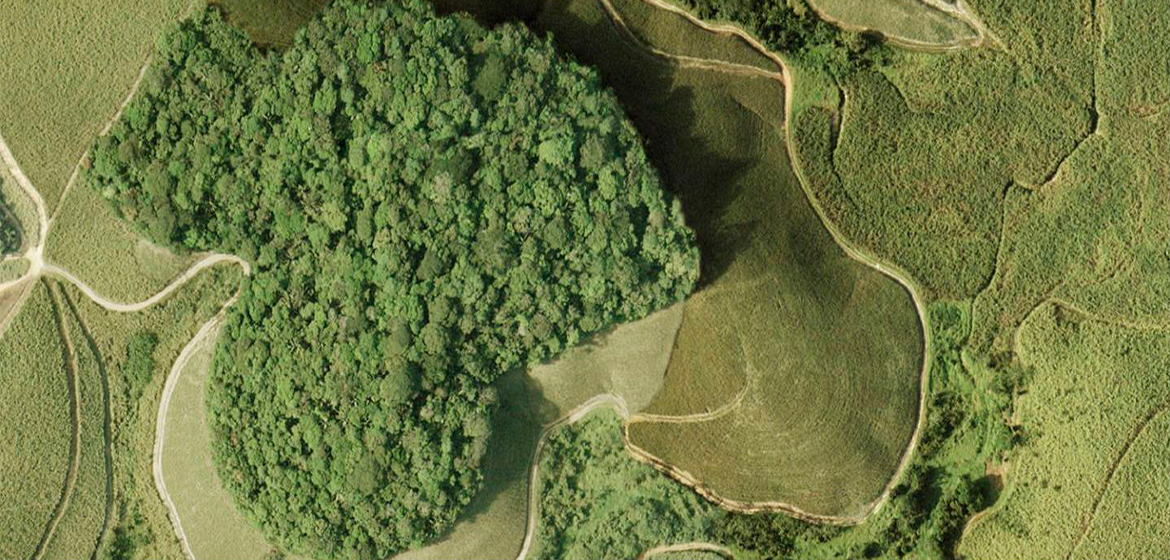By Hugh Biggar
BONN, Germany (Landscape News) — Tropical forests are home to more than half of the world’s species and play an important role in offsetting global warming, but they are under threat due to global demand for land, energy, food and other resources.
The scale of that threat can now be better understood through the findings of scientists at the (UFZ).
In a recent study published in the researchers use a theory that applies to snowflakes as well as to the tropics to quantify how tropical forests in Africa, Central and South America and Southeast Asia are increasingly fragmenting into isolated patches that degrades ecosystems and food chains. The analysis concludes that such fragmentation is near a tipping point, beyond which forest fragmentation will only increase.
“If deforestation proceeds as usual, the number of forest fragments will explode in the next decades while their size will decrease,” said Franziska Taubert, an ecological modeler at UFZ said. “The landscape will thus be composed of numerous small and isolated forest fragments. The consequences for society include loss of biodiversity and additional carbon emissions in the border of fragments due to increased tree mortality.”
Taubert and her co-authors used high-resolution Landsat satellite imaging to measure forest cover. The researchers found similar distribution patterns across the three continents. The number of fragments of tropical forest under 10,000 hectares was similar across Africa, Central and South America and Southeast Asia despite differences in land use. Such similar distribution patterns led the researchers to percolation theory.
“Fractal, self-similar structures are usually created by local interactions that propagate over longer distances and thus repeat themselves,” Taubert said. “Natural systems, for example branches of fern or coastlines, usually have limits and do not repeat themselves to infinity.”
Based on this concept, Taubert and her team were able to predict how forests will segment in the coming decades. In Central and South America, in one example, the number of fragments of forests will increase 33-fold by 2050.
“Percolation theory describes the transition between two different phases, which is characterized by the so-called critical point,” Taubert explained.
“A well-known example is the freezing of water at zero degrees, for example, snowfall in winter. At this point ice crystals stick together and form unique snowflakes with so-called fractal, self-similar structures, that is structures repeat themselves again and again when you zoom in. Surprisingly, global forest cover data from satellites also show fractal structures with many small forest fragments and only a few large ones – a pattern similar across all continents.”
This application of percolation theory to tropical forests — including rainforests, mangroves, and flooded forests in freshwater swamps — shows how fragmentation will proceed in the near future, the report states. The findings come at time when many nations and international organizations are trying to slow down , which leads to conflict over shrinking natural resources, migration, and declining numbers of plant and wildlife species.
In one example cited in the UFZ paper, many species such as the jaguar depend on large sections of contiguous forest for survival. are also rich with trees, birds, mammals and other wildlife, and home to about 80 percent of the world’s species while covering 6 percent of the earth’s land surface.
They are also largely unstudied, with new species frequently discovered. Rainforests such as the Amazon also play a vital role in storing carbon and reducing emissions that are part of global warming,
To better protect these forest landscapes, there are several international initiatives underway. The aims to expand the world’s forests by 120 million hectares – an area roughly equivalent to the size of South Africa.
The , a global effort to bring 150 million hectares of deforested and degraded landscapes into restoration across the globe by 2020 restoration by 2020, and 350 million hectares by 2030.
Meanwhile, and other efforts such as are actively working to stem the decline.
Similarly, says Taubert, ensuring reducing the growing number small and isolated fragments of tropical forests will require specific interventions such as reforestation and reducing deforestation.
Source:
Related to SDG 13: Climate action and SDG 15: Life on land



